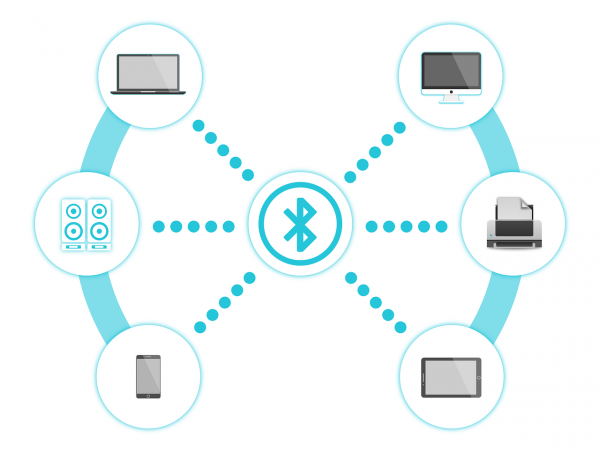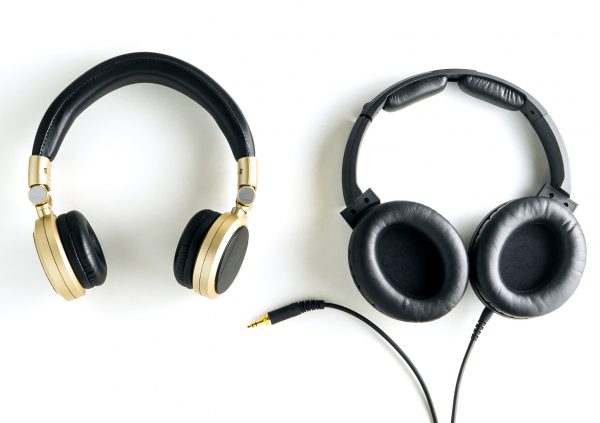No music, no life. That’s how the saying goes. Gone were the days that listening to music seemed to be a chore. Decades ago, it was a luxury to own physical copies of the hottest singles or albums. Music now has truly become a necessity. Thanks to various technological advancements of our time, we can enjoy our favorite songs on our smartphones. Online music streaming applications heard the call and enabled us to indulge in our playlists anywhere on-the-go. In turn, mobile audio accessories welcomed the shift to the wireless era as well with Bluetooth and wireless headphones becoming all the rage today.
As more and more people are embracing this hands-free change, others are still a bit lost and wary about understanding and adopting this wireless technology. So now, the obvious question is: how do wireless headphones work? Are Bluetooth and wireless the same? What do you need to look for when buying wireless headphones? This article will answer all of these questions. But first, let’s get to the basics.
Clearing the Air on Audio Accessories
We often hear and see the words ‘headphones’, ‘headset’, ‘earphones’, and ‘earbuds’ get thrown altogether. These devices may share the same form and function but really, what is the difference between all of them?
- Headphones – In its simplest form, a pair of headphones consist of two speakers connected to a band. This band is worn across the top of the user’s head, which positions the speakers directly over the ears. Hence, the sound is delivered straight to it. Headphones also offer noise cancellation (blocking noise from the outside) from their padded earmuffs. This provides a more confined and immersive listening experience.
- Headset – The headset is a pair of headphones that come equipped with a microphone. There are two types of headset microphones. The boom type sports a mic attached to an adjustable or extendable arm. On the other hand, the in-line type features a mic attached to the cable that connects the headset to any device.
- Earphones – Consider the earphones as the headphones’ little brother. It cuts down the bulk of the headphones by getting rid of the band and the earmuffs. Inserted into the ear canal, it’s essentially an in-ear speaker. Earphones (also called in-ear headphones) come with cushions of different types and sizes as well to lessen user discomfort.
- Earbuds – Earbuds and earphones are the same. The only significant difference is that the former do not have cushions, though they can be fitted with such. Earbuds are meant to be worn outside the ear canal, specifically on the concha ridge of the outer ear. They also allow ambient noise in, enabling the user to hear what’s going on around.
Manufacturing companies tend to interchange these terms and their definitions to suit their marketing needs.

Bluetooth and Wireless Headphones: The Real Score
Bluetooth and wireless are two terms that are used side-by-side with each other nowadays. They are even used to describe the same audio accessories that are available on the market. Though they may sound and appear as the same, they have key differences that set them apart. These points mainly concern the technology they run on. Yes, wireless and Bluetooth are both standards for wireless communication today. But one statement sums up their basic difference. All Bluetooth devices are considered wireless, but not all wireless devices run on Bluetooth tech.

So, How Do Wireless Headphones Work?
The modern cornerstone of wireless technology is Bluetooth. So, let’s start with it. This wireless tech connects devices within a short range by way of radio waves without the help of any cables or wires. The technology is used to send and receive information between Bluetooth-enabled devices like laptops, tablets, smartphones, etc. Hence, it requires a pairing handshake so that such gadgets are synced with each other. In Bluetooth headphones, they pair directly to your phone which provides you a wire-free experience. Depending on models, Bluetooth headsets have a range of up to 32 feet.
How is the sound or the music transmitted from the smartphone to headphones? The answer is via codec. Codecs are programs that compress data for faster transmission and then decompress it again upon reception. The codec compresses the digital audio signal on your phone. It is then transmitted over the air straight to your headphones. Audio players and headsets both possess audio codecs. You just have to make sure both devices you have support the same codec to work properly.
On the other hand, wireless headphones not running on Bluetooth use two other options: infrared and radiofrequency waves. Both require a base unit, a part that connects the wireless headset to the source device. Adapters and dongles are examples of a base unit. These connect to the device internally or externally and are still wire-free.
Infrared waves work precisely like a television remote. The signal transmission range is limited to 7 meters or less. It also requires a clear line of sight to work. Alternatively, radiofrequency waves work like your old radio and are much more powerful than the infrared signal. This enables a better and farther range of up to 300 feet, still depending on your surroundings.

Wired versus Wireless
The debate regarding which is better between wired and wireless headphones has been going on for quite some time. And it seems it won’t be ending anytime soon. Choosing what to use between the two devices might be difficult because of their key features and benefits:
Wired Headphones
- Superior Sound Quality – Wired headphones generally have superior audio quality compared to the wireless ones. The reason is that they connect directly to the music player through the 3.5mm audio jack. You don’t have to worry about interference and proximity as with a wireless headset.
- Ease and Simplicity – You just have to plug it into your smartphone’s audio jack and you’re good to go.
- Batteries Not Included – Wired headsets do not need battery power to function.
Wireless Headphones
- Cable-free Convenience – Wireless headphones eliminate the hassle of dealing with cords and cables.
- Heightened Comfort – Aside from being wire-free, present earpiece models on the market today come with enhanced ergonomics. This makes them more comfortable when worn on your ears.
- Bluetooth Compatibility – You can make a quick and effortless connection to any Bluetooth-enabled device with your wireless headset.
Points to Consider in Buying Wireless Headphones
- Audio Quality – As mentioned earlier, codecs play a big part regarding sound quality. Another one is latency which is the short delay between audio signals being sent and received. Make sure to take note of these two factors before purchasing for a better listening experience.
- Battery Life – Bluetooth headphones and earbuds get their power from a built-in rechargeable battery. These batteries charge by using a USB cable. Most headphone models offer 20 to 30 hours of battery life, while most earbuds provide around 8 hours. True wireless earbuds (both buds are separate) offer a shorter life of 3 to 5 hours and come with special charging cases. Keep in mind that volume levels affect battery life as well.
- Design and Size – Wireless headphones now come in three types: over-ear, on-ear, and in-ear. Selecting between them is just a matter of personal preference and lifestyle.
